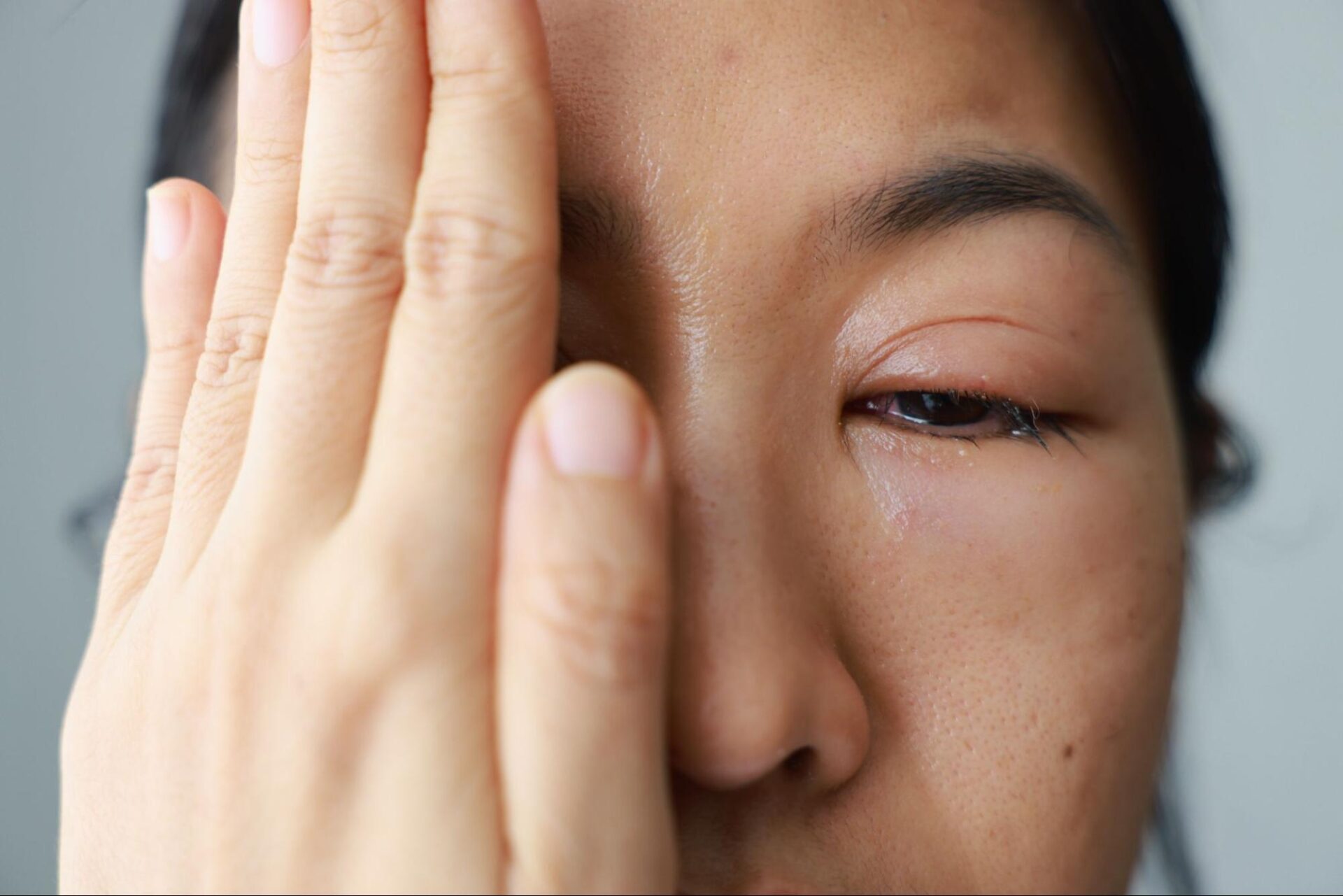
Urgent Care for Open Globe Injury: Saving Vision and Preventing Complications
-
Eye Health
Open globe injuries require immediate treatment. Explore causes, symptoms, and how timely surgery can prevent permanent vision loss.
Eye trauma can range from mild irritation to serious damage that threatens vision. When the eyeball itself is injured, it’s called a globe injury, and many cases require urgent surgical care.
One of the most severe forms is an open globe injury. This is where the outer wall of the eye is disrupted. Recognizing the signs and seeking immediate treatment is critical for protecting vision and avoiding long-term complications.
What are globe injuries?
A globe injury refers to any trauma that affects the eyeball itself, also known as the globe. These injuries can vary widely in severity, from minor bruising to full-thickness wounds that expose the inner structures of the eye.
Globe injuries are typically grouped into two main categories:
Closed globe injuries, where the outer wall of the eye remains intact. These may involve internal damage like bleeding, swelling, or retinal detachment.
Open globe injuries, where there is a full-thickness wound in the eye wall, often caused by a sharp object or high-impact trauma.
Understanding which type of globe injury has occurred is essential as the type of injury may influence the treatment options recommended to patients.
What is an open globe injury?
An open globe injury occurs when there is a full-thickness wound in the outer wall of the eye. This typically occurs in either the cornea, the sclera, or both. This type of injury exposes the delicate internal structures of the eye and is considered a surgical emergency.
In some cases, a globe rupture (also known as a ruptured globe) occurs when the outer wall breaks from blunt or penetrating trauma. Unlike closed globe injuries, open globe injuries involve a direct breach of the eye’s protective layers. This significantly raises the risk of vision loss, and in severe cases, damage may be irreversible without prompt surgical repair.
Causes and risk factors for an open globe injury
An open globe injury can result from a wide range of accidents and high-impact trauma. In many cases, these injuries are caused by a sharp object penetrating a patient’s eye or blunt trauma strong enough to rupture the outer wall of the globe.
Unlike other types of blunt eye trauma, open globe injuries often involve a full-thickness wound and are considered a serious injury that requires emergency care.
Workplace accidents involving tools, machinery, or flying debris
Falls, sports injuries, or physical altercations
Explosions or fireworks
Motor vehicle collisions
Some open globe injuries are caused by penetrating injuries, such as accidents involving glass, wire, or metal
Certain environments and activities carry a higher risk. This is particularly true for jobs involving construction, landscaping, or manufacturing. Lack of protective eyewear during these activities increases the likelihood of a serious eye injury.
Signs and symptoms
An open globe injury often presents dramatic and visible symptoms. In other cases signs may be more subtle, especially if the eye wall rupture is small. Prompt recognition is critical, as delayed treatment can lead to serious complications or permanent vision loss for patients.
Common signs and symptoms include:
Sudden decrease in vision or complete vision loss
Visible wound or tear in the eye
Misshapen or collapsed appearance of the eyeball
Protrusion of eye tissue through the wound
Severe eye pain
Bleeding from the eye or inside the eye (hyphema or vitreous hemorrhage)
Low intraocular pressure (soft eye on examination)
Patients may also experience excessive tearing, eyelid swelling, or light sensitivity.
Can a globe injury heal on its own?
Open globe injuries should never be left to heal without medical attention. In most cases, the answer to the question “can eye injury heal on its own” is no.

Unlike minor eye injuries, such as surface scratches or mild irritation, globe injuries involve trauma to the internal structure of the eye. Even if the initial injury seems small, it can lead to serious complications if not treated properly. Because of the delicate nature of the eye, waiting to see if an eye injury can heal on its own often leads to worse outcomes.
How is an open globe injury diagnosed?
The eye doctor will typically begin the diagnoses by assessing a patient's history and gathering details about how and when the injury occurred, as well as any immediate symptoms or events that followed. During the initial exam, doctors take great care not to apply direct pressure to the injured eye, as this can worsen the damage.
Diagnostic steps may include:
A slit lamp examination to assess the eye’s surface and internal structures.
A Snellen chart test to check visual acuity and detect vision loss.
A CT scan of the face and orbits to identify possible fractures or foreign objects.
Certain tests will be deferred until an open globe injury is ruled out, to avoid worsening the damage. For example, doctors may avoid CT scans if the patient has debris in their eye.
Treatment for open globe injuries
Treatment for most open globe injuries will require prompt surgical repair. Once the eye has been stabilized, the patient is typically transferred to a hospital or ophthalmic center for emergency intervention.
The surgical goal is to close the wound, preserve remaining eye tissue, and reduce the risk of complications like endophthalmitis. In some cases, multiple procedures may be required, especially if internal structures such as the retina or lens have been damaged.
Timely surgical intervention improves the chances of better visual outcomes, though the degree of vision recovery depends on the severity and location of the injury.
Potential Complications
Even with prompt surgical repair, an open globe injury carries a risk of serious complications. The extent of damage at the time of injury, along with the speed of treatment, often determines long-term outcomes.
Infection : A serious infection inside the eye that can lead to rapid vision loss if not treated immediately.
Retinal Detachment: Trauma may cause the retina to separate from the back of the eye, requiring additional surgery.
Vision Loss: Depending on which structures are affected, partial or complete vision loss may occur—even after successful surgery.
Sympathetic Ophthalmia: A rare autoimmune response in which the uninjured eye becomes inflamed weeks or months after the initial trauma.
Glaucoma: Elevated eye pressure may develop due to internal damage, requiring ongoing monitoring and treatment.
Close follow-up with an ophthalmologist is critical after surgery to monitor healing and manage any secondary complications.
Recovery and Follow-Up
Healing after an open globe injury is often a gradual process that depends on the extent of the damage and the success of surgical repair. Most patients will need ongoing follow-up care with an ophthalmologist to monitor healing, manage inflammation, and detect any late complications.
Recovery will typically involve the use of prescribed eye drops to prevent infection and control inflammation. Patients may also be instructed to limit physical activity to avoid pressure on the eye and schedule follow-up visits to assess intraocular pressure and visual progress.
In many cases, doctors may use an ocular trauma score to help predict visual outcomes based on the severity and location of the injury. Some patients may experience lasting changes in vision and may require corrective lenses or further surgeries to optimize visual function. In severe cases, rehabilitation may include low-vision aids or support from vision specialists.

If you believe you have an open globe injury or a related condition, contact us to book an appointment with Eduardo Besser, MD. Our offices are located in Culver City, in Los Angeles County.
Related articles

Eye Injury Prevention While Playing Sports
Safely enjoy your favorite sports and outdoor activities by learning these eye injury prevention tips.
-
Eye Health

Globe Injury Iris Prolapse Management
Discover how eye trauma can lead to iris prolapse, what symptoms to watch for, and how globe injuries are diagnosed and treated.
-
Eye Health

Emergency Eye Care: When You Should See Your Doctor ASAP
In this article, you'll learn what's considered an eye emergency, where to receive medical attention, and what to do in the most common scenarios faced by patients.
-
Eye Health
